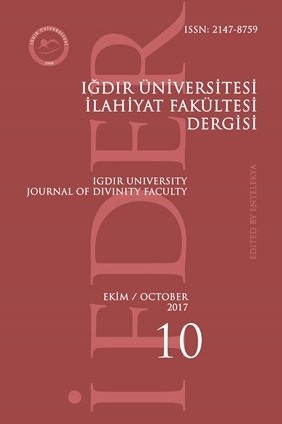Kâdî Beyzâvî Tefsirinde Teşbih Sanatı
İslam tarihindeki önemli belâğî tefsirlerden biri de Kâzî Beyzâvî’nin Envâru’t-Tenzîl ve Esrâru’t-Te’vîl adlı tefsiridir. O, bu eserinde birçok belâgat konusuna yer vermekle birlikte “teşbih” sanatına özel bir ilgi göstermektedir. Çok sayıda beyit ve özdeyişle de istişhâd ederek söz konusu sanatın Kurân-ı Kerîm’de yaygın olarak kullanılan türlerine işaret etmekte, mürekkep, müfred ve temsili teşbihler hakkında önemli açıklamalar yapmaktadır. Teşbihin hazfedilen rükünlerini takdir etmeye çalışmakta, iki tarafında da (müşebbeh, müşebbehün bih) bulunması gereken ve tespiti oldukça güç olan ortak vasfın belirlenmesi noktasında dikkate değer vecihler zikretmektedir. Müfessirimiz bazı ayetleri birbiriyle mukayese ederek ve şiirlerden de faydalanarak, teşbih ve istiare arasındaki farklara da temas etmektedir.
The Art of Simile in Qadi Baydawi's Tafsir
One of the important rhetorical tafsirs in Islamic history is Anwar al-Tanzil wa Asrar al-Ta’wil by Qadi Baydawi. He covered many eloquence subjects in this tafsir and shows a special interest in "simile" art. He brought evidence by numerous verses and aphorism and pointed to the type of similes are widely used in the Quran. Then he made important explanations about singular and plural forms of similes and tried to uncover the hidden elements of analogy. He also mentions about the important ideas for determining a common attribute which must be present on both sides and which is very difficult to identify. Our commentator contacts the differences between simile and metaphor through comparing some verses with each other and using poetry.
- ISSN: 2147-8759
- Başlangıç: 2013
- Yayıncı: Iğdır Üniversitesi
Sayıdaki Diğer Makaleler
Nahçıvan Ahalisinin Etnogenezi Tarihinde Tus Türkleri
'V-z-r' Kökü ve Türevlerinin Kur’ân-ı Kerim’de Kullanımı
Maturidiliğin Yayılışı (V-VII. Yüzyıllar)
Hâdî Vekîlî - Enîse Sâdat Hüseynî ŞERÎF, Şahin AHMETOĞLU
Poetika (Şiir) Üzerine Küçük Şerh
Metafizik Üzerine Büyük Şerh: Lambda Kitabı, Giriş
Klasik Felsefede Değerlerin Teolojik, Metafizik ve Bilimsel Açıdan Konumu
Risalet Döneminde Savaşın Meşruiyetine İlişkin Bir Rivayet
